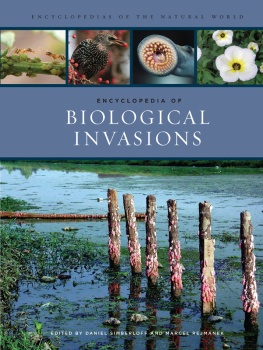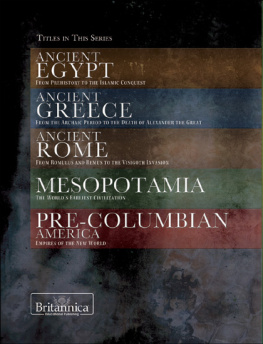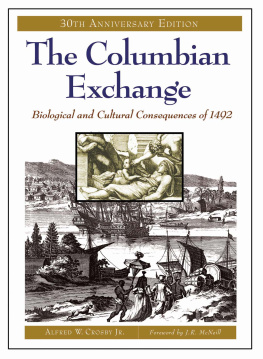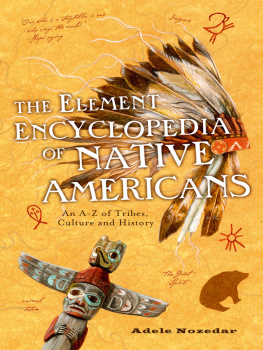The Ongoing Columbian
Exchange
THE ONGOING
COLUMBIAN EXCHANGE
Stories of Biological and Economic
Transfer in World History
Christopher Cumo

Copyright 2015 by ABC-CLIO, LLC
All rights reserved. No part of this publication may be reproduced, stored in a retrieval system, or transmitted, in any form or by any means, electronic, mechanical, photocopying, recording, or otherwise, except for the inclusion of brief quotations in a review, without prior permission in writing from the publisher.
Library of Congress Cataloging-in-Publication Data
Cumo, Christopher, author.
The ongoing Columbian exchange : stories of biological and economic transfer in world history / Christopher Cumo.
p. ; cm.
Includes bibliographical references and index.
ISBN 978-1-61069-795-8 (alk. paper) ISBN 978-1-61069-796-5 (eISBN)
I.Title.
[DNLM: 1.Communicable DiseasesEncyclopediasEnglish.2.Animals, DomesticEncyclopediasEnglish.3.Communicable Diseaseshistory. 4.History, Early Modern 14511600.5.History, Modern 1601.6.Plants, EdibleEncyclopediasEnglish.WC 13]
RA643
616.903dc232014036128
ISBN: 978-1-61069-795-8
EISBN: 978-1-61069-796-5
191817161512345
This book is also available on the World Wide Web as an eBook.
Visit www.abc-clio.com for details.
ABC-CLIO, LLC
130 Cremona Drive, P.O. Box 1911
Santa Barbara, California 931161911
This book is printed on acid-free paper 
Manufactured in the United States of America
CONTENTS
- Almond
- Alpaca
- Apple
- Apricot
- Artichoke
- Asparagus
- Avocado
- Banana
- Barley
- Beans
- Blueberry
- Broccoli
- Cabbage
- Cacao
- Cantaloupe
- Carp
- Carrot
- Cashew
- Cassava
- Cauliflower
- Chestnut
- Chicken
- Chickenpox
- Cholera
- Cinnamon
- Citrus Fruits
- Clove
- Coffee
- Corn
- Cottony Cushion Scale
- Cow
- Cranberry
- Cucumber
- Date
- Diphtheria
- Donkey
- Dutch Elm Disease
- European Corn Borer
- Grape Phylloxera
- Grapes
- Hemp
- Hessian Fly
- Honeybee
- Horse
- Immigration
- Influenza
- Japanese Beetle
- Kola Nut
- Leprosy
- Lettuce
- Llama
- Malaria
- Measles
- Millet
- Mink
- Nutmeg
- Oats
- Olive
- Onion
- Opium
- Pea
- Peach
- Peanut
- Pear
- Pecan
- Peppers
- Pig
- Pineapple
- Pistachio
- Plague
- Pneumonia
- Potato
- Rabbit
- Rat
- Rice
- Rubber
- Rye
- San Jose Scale
- Scarlet Fever
- Sheep
- Silkworm
- Slave Trade and Slavery
- Smallpox
- Soybean
- Streptococcus Infections
- Sugarcane
- Sweet Potatoes
- Syphilis
- Tea
- Tobacco
- Tomato
- Tuberculosis
- Turkey
- Typhoid
- Typhus
- Walnut
- Water Buffalo
- Watermelon
- Wheat
- Whooping Cough
- Yam
- Yaws
- Yellow Fever
Animals
- Alpaca
- Carp
- Chicken
- Cottony Cushion Scale
- Cow
- Donkey
- European Corn Borer
- Grape Phylloxera
- Hessian Fly
- Honeybee
- Horse
- Japanese Beetle
- Llama
- Mink
- Pig
- Rabbit
- Rat
- San Jose Scale
- Sheep
- Silkworm
- Water Buffalo
Diseases
- Chickenpox
- Cholera
- Diphtheria
- Dutch Elm Disease
- Influenza
- Leprosy
- Malaria
- Measles
- Plague
- Pneumonia
- Scarlet Fever
- Smallpox
- Streptococcus Infections
- Syphilis
- Tuberculosis
- Typhoid
- Typhus
- Whooping Cough
- Yaws
- Yellow Fever
Plants and Their Derivatives
- Almond
- Apple
- Apricot
- Artichoke
- Asparagus
- Avocado
- Banana
- Barley
- Beans
- Blueberry
- Broccoli
- Cabbage
- Cacao
- Cantaloupe
- Carrot
- Cashew
- Cassava
- Cauliflower
- Chestnut
- Cinnamon
- Citrus Fruits
- Clove
- Coffee
- Corn
- Cranberry
- Cucumber
- Date
- Grapes
- Hemp
- Kola Nut
- Lettuce
- Millet
- Nutmeg
- Oats
- Olive
- Onion
- Opium
- Pea
- Peach
- Peanut
- Pear
- Pecan
- Peppers
- Pineapple
- Pistachio
- Potato
- Rice
- Rubber
- Rye
- Soybean
- Sugarcane
- Sweet Potatoes
- Tea
- Tobacco
- Tomato
- Turkey
- Walnut
- Watermelon
- Wheat
- Yam
- Document 1: Entry from the Journal of Christopher Columbus, November 6, 1492
- Document 2: Ferdinand Columbus, Uses of Tobacco, 1493
- Document 3: Hernn Corts on Smallpox, May 15, 1522
- Document 4: Job Hortop, Carried Thence for Traffic of the West Indies Five Hundred Negroes, 1567
- Document 5: Anonymous, Columbian Exchange Crops, 1763
- Document 6: Edward Jenner, Cowpox and Smallpox, 1798
- Document 7: Wm. Bollaert, On the Alleged Introduction of Syphilis from the New World, 1864
- Document 8: Charles V. Riley, Mites in Europe and the United States, 1869
- Document 9: Walter Reed, Mosquitoes and Yellow Fever, 1902
- Document 10: Charles Piper and William Morse, The Soy Bean, 1910
- Document 11: Volunteer Medical Service Corps, Influenza Epidemic, 1918
- Document 12: George Washington Carver, Many Uses of the Peanut, 1925
My interest in the Columbian Exchange grew out of my awareness that all life, including humans, is best understood from a biological perspective. The history of humankind is inextricably intertwined with the outbreak, recrudescence, and retreat of diseases; the domestication and spread of edible plants and livestock; and the omnipresent threat of damage or disease from insects.
I do not seek to replicate the work of Alfred Crosby, whose The Columbian Exchange, published by this press in 1973, has set the standard for scholarship in this field. My purpose is to prepare a reference work that will help high school students and undergraduates grasp the key features of the Columbian Exchange. The AZ format, comprising 106 entries, will allow readers to focus on specific aspects of the Columbian Exchange. The student should note from the outset that the Columbian Exchange was not simply an event in the distant past. It is ongoing. Consider the soybean as an example. A latecomer to the Columbian Exchange, it traveled two paths to the Americas. It spread from northern China to Europe and then to the Americas across the Atlantic Ocean. At the same time, it spread likely from China and Japan to the Americans across the Pacific Ocean. In fact the U.S. Department of Agriculture (USDA) sent two scientists, William Morse and Charles Piper to collect soybean varieties from primarily Japan but also China in the late 19th century. Although these soybeans were fed to livestock more for their foliage than their pods and seeds, they formed the breeding stock that the USDA would use to develop new varieties of soybean that farmers grew for their beans. With the expansion of uses for soybean meal and oil, the soybean became during the 20th century one of the most important crops in the United States, and this situation continues today with the United States being the worlds leading producer of soybeans. The Corn Belt is the primary region of cultivation, so much so that some Corn Belt states grow more soybeans than corn. The heavy clay soils of northwestern Ohio are a good example of this trend. One expects soybeans to grow in importance as a world crop. The Columbian Exchange, thus, promises to shape the future as it has the past and present.

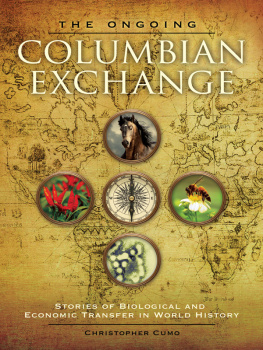


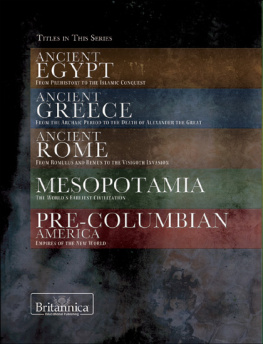
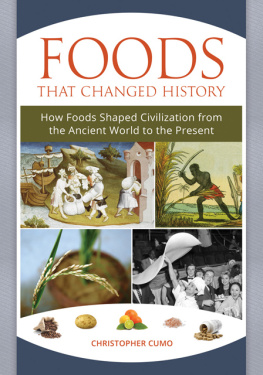
![Patrick G. Zander - Fascism through History [2 volumes]: Culture, Ideology, and Daily Life](/uploads/posts/book/262756/thumbs/patrick-g-zander-fascism-through-history-2.jpg)
